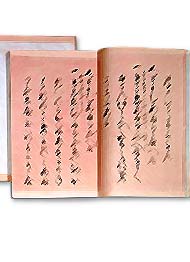
 |
|
| An Introduction to the mysteries of Okinawan Music and its tremendous history. Each of the various music styles that have blossomed throughout history in Okinawa has its own story woven into it. In this column we explore the threads of the mystery of this magnificent musical legacy. | |
| (Reference: "Okinawa Uta no Tabi" by Makoto Aoki) | |
 |
- How were the Omoro ballads sung? - The Omoro-soushi is a collection of ancient songs and ballads, some of which were originally called Umui, songs chanted by priestesses at festivals. Let's take a look at how the songs originally sounded. One of the distinctive features of the Omoro ballads is the interjection of sounds such as "Yo" and "Oi" in between the verses of the song. These are sung within the natural rhythm of breathing and in a relaxed manner. The way of singing might seem just a bit restrained. Musicologist Seihin Yamauchi suggests this may be the result of the influence of Japanese on the manner of voicing songs, so they come out sounding a bit serious. Perhaps the result of an attempt at incorporating the dignity of the mainland Japanese style. |
||
| Photo : Okinawa Prefectural Museum, Hiroshi Shimabukuro | |||